frankie. reblog blog. - - -maybe NSFW. view at your own discretion. artblog : coffeefrank COMMISSION INFO status: closed.
Don't wanna be here? Send us removal request.
Text
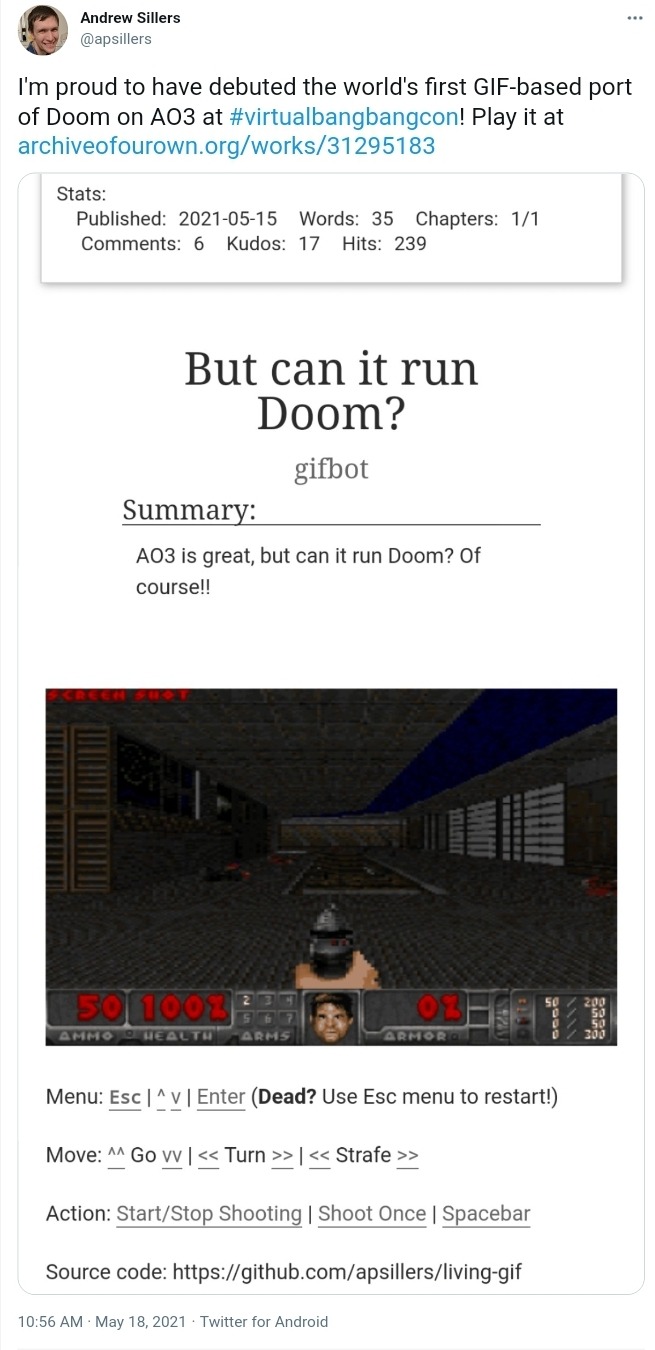
Holy fucking shit y'all.
188K notes
·
View notes
Quote
Please, let him be soft. I know you made him with gunmetal bones and wolf’s teeth. I know you made him to be a warrior a soldier a hero. But even gunmetal can warp and even wolf’s teeth can dull and I do not want to see him break the way old and worn and overused things do. I do not want to see him go up in flames the way all heroes end up martyrs. I know that you will tell me that the world needs him. The world needs his heart and his faith and his courage and his strength and his bones and his teeth and his blood and his voice and his– The world needs anything he will give them. Damn the world, and damn you too. Damn anyone that ever asked anything of him, damn anyone that ever took anything from him, damn anyone that ever prayed to his name. You know that he will give them everything until there is nothing left of him but the imprint of dust where his feet once trod. You know that he will bear the world like Atlas until his shoulders collapse and his knees buckle and he is crushed by all he used to carry. Dear God, you have already made an Atlas. You have already made an Achilles and an Icarus and a Hercules. You have already made so many heroes, and you can make another again. You can have your pick of heroes. So please, I beg you– he is all that I have, and you have so many heroes and the world has so many more. Let him be soft, and let him be mine.
Please, let him be happy ( j.p. )
40K notes
·
View notes
Text
[mdzs] Analysis of Jiang Cheng’s name and character traits
After my previous posts on WWX and LWJ’s names (now LSZ’s also), I decided to do another one on Jiang Cheng, as I think this reference sheds so much light on his significance in the story.
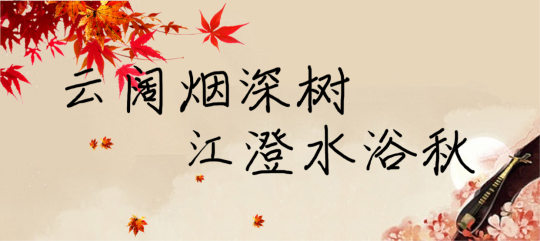
Jiang Cheng’s name derives from a poem by renowned Tang Dynasty poet Du Mu. “云阔烟深树,江澄水浴秋” (yún kuò yān shēn shù, jiāng chéng shuǐ yù qiū) translates to “vast clouds and mists entwine the deep forest trees; autumn bathes in the clear river”. Cheng (澄) itself means “to make [sth] clear and unclouded”.
The poem paints a vivid picture of autumn’s colours dancing on the clear water. Interestingly, the phrase 秋水 (directly meaning autumn waters), is used to describe a longing gaze, deriving from the Chinese idioms 秋水伊人 (meaning the friend one is longing for) and 望穿秋水 (meaning await with great anxiety).
My heart aches at this discovery. Doesn’t this bring to mind JC’s plight of persuading WWX to abandon the dark and perilous demonic path, his envy of WWX and LWJ’s relationship, the months he spent waiting anxiously for his return from the Burial Mounds, and looking after Chen Qing for 13 years whilst keeping faith that one day he might see his brother again? JC’s father chose his name to mean “clear, untarnished”, however throughout his life he lived in WWX’s shadow... he hid his true feelings towards him behind brash words in life and raging condemnation in death.
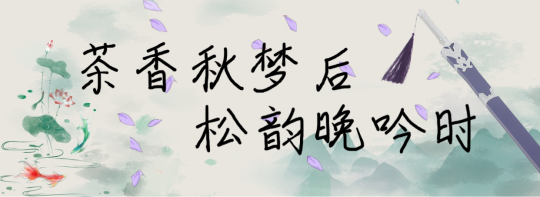
Jiang Cheng’s zi, or courtesy name Wan Yin (晚吟), comes from a poem by another Tang Dynasty poet Xu Hui. “茶香秋梦后,松韵晚吟时” (chá xiāng qiū mèng hòu, sōng yùn wǎn yín shí) translates to “I wake from a hazy nap in autumn, enshrouded by the fragrant aroma of tealeaves; at dusk I saunter and recite poetry, the pine branches swaying in time”. The words Wan (晚) means “at night” and Yin (吟) means “to recite” or “to lament”. The poem’s depiction of a deep sense of abstruse melancholy – as the poet spends his days in Autumn idly, being indifferent to the world – is widely quoted by Chinese literati of today’s age.
To me, this is a great depiction of how lost and despondent JC would have been the first few years after WWX’s death. Let’s not forget that he is the only surviving character in the story who lost every single person dear to him the moment WWX died – it’s hard to imagine how he managed to rebuild the Sect without anyone by his side...
Bonus trivia: Both JC’s birth and courtesy names are taken from scenic moments set in Autumn. In Chinese tradition, the Autumn season is associated with the emotions of both courage (霜气横秋) and sadness (秋风落叶), the act of mourning (秋祭), and is also connected to the Westward direction, often considered to be the direction of dreams and enlightenment. These words depict JC’s key events in mdzs – courage when he saved WWX from the Xuan Wu cave, sadness when WWX defected from the Jiang Sect, mourning when he lost all his loved ones, and enlightenment when he found out about the golden core and finally resolved his inner turmoil.
2K notes
·
View notes
Text
[mdzs] Detailed story behind Wei Wuxian’s name

Continuing from last time where I explained the origins of Lan Wangji’s name, I thought I’d also post one for our beloved Xianxian.
His surname Wei (魏) primitively meant “ghosts and spirits” (the radical 委 means spirit and 鬼 means ghost). After it became a royal family name, it is to this day used to describe something as “grand, tall or mighty”.
His zi, or courtesy name Wuxian (无羡), comes from the last line of a poem by Ming Dynasty literati Xu Ben. “即无羡鱼志,外物非所迁” (jí wú xiàn yú zhì, wài wù fēi suǒ qiān) translates as “to be free of envy and aspire to greater heights; not be misguided by honorary reputation and personal gain”.
即 - to seek; aspire
无羡 - to be free of envy
鱼志 - derives from the Chinese idiom 鲲鹏之志, originating from a literary work by Chinese philosopher Zhuangzi meaning “to be ambitious”
外物 - literally means “objects external to the body”, now used to describe personal gain and external honours
迁 - misguide; led by
To me, this is the perfect embodiment of Xianxian’s character. He comes from a lowly background as the son of a manservant, but lived his life not being envious of Jiang Cheng’s destined position as Sect leader, even sacrificing his life’s potential for him. He always did what he thought was right, even if it meant going against the will of the majority. He could have easily kept his honour as the almighty Grandmaster of Demonic Cultivation at the Yunmeng Jiang Sect, but chose to abandon it all and help the feeble and abhorred Wen clan survivors, as he knew they were wronged.
Bonus trivia: Xianxian’s birth name Ying (婴) commonly means “infant”, but there is actually another interesting story behind this word. Another meaning for Ying is “to pester, to touch”. This second meaning derives from a famous piece of literature by Western Jin Dynasty official and writer Li Mi called 「陈情表」 (chén qíng biǎo). The first two words 陈情 is also the name of Xianxian’s flute. The work describes the story of Li Mi’s grandmother’s great sacrifice to bring him up and his determination to repay her. Today it is one of the most famous literary works for teaching new generations about filial piety, a key Confucian virtue. Even though 陈情 on the surface has two meanings, (1) “to convey one’s inmost feelings” (abbreviation of 陈述衷情) and (2) “former relationship” (abbreviation of 陈旧的情义) , I think this side story gives the name much more depth. Maybe Xianxian sees his cultivation of the demonic path as a way of repaying the Jiang family for everything they’ve done...
Jiang Cheng’s name story here⚡️🪁
Lan Sizhui’s name story here👶🏻🥕
2K notes
·
View notes
Note
Hello! I was wondering if I could ask you a question about something I noticed in post 136427994491 (and in tradition Chinese photography in general). I've noticed that there are sometimes a red marking on a women's forehead. Do these markings mean anything? I'm particularly curious about the one that looks like a flower and the ones that are a dot
Hi, of course I’m happy to answer your question!
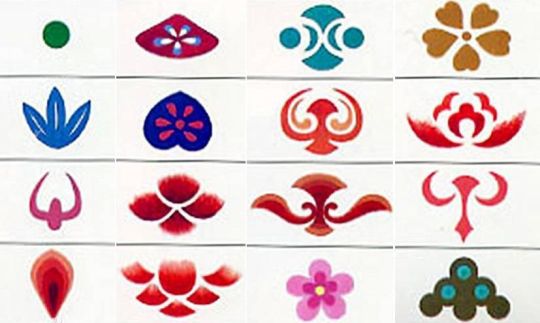
The forehead markings are called “huadian/花鈿", and they are a purely ornamental type of accessory that was most popular during the Tang Dynasty. Huadian came in a variety of colors (red, green, yellow - but mostly red), shapes (flowers/petals, animals - birds/fish, etc.), and materials (paint, paper, gold, pearls, petals, fish bones, seashells, feathers, etc.). Nowadays it is usually painted on/a temporary tattoo. Fouryearsofshades has a write-up on huadian here. Below - historical huadian:

Huadian can be worn on the cheeks, as seen in the two left pictures in the 2nd row above - these are called mianye/面靥 or xiaoye/笑靥. They usually took the form of a dimple about one centimeter from each side of the lips, and came in a variety of shapes, including coins, peaches, birds, and flowers.
There is a legend about the origin of huadian, recounted by Hua Mei in the book Chinese Clothing
(pdf):
“The Huadian or forehead decoration was said to have originated in the South Dynasty, when the Shouyang Princess was taking a walk in the palace in early spring and a light breeze brought a plum blossom onto her forehead. The plum blossom for some reason could not be washed off or removed in any way. Fortunately, it looked beautiful on her, and all of a sudden became all the rage among the girls of the commoners. It is therefore called the “Shouyang makeup” or the “plum blossom makeup.” This makeup was popular among the women for a long time in the Tang and Song Dynasties.”
The flower/petal shapes typically represent the plum blossom. I’m not sure if the dot represents anything significant, besides being a common shape.
Below - actresses wearing huadian and mianye in film/tv:

Hope this helps! :)
Edit: See here for post identifying the actresses/films/tv series in the compilation above.
6K notes
·
View notes
Text
50. Act 10: Crafty Child: Part 5
The thought was gone in an instant. The next moment, an inky black ceiling filled Wei WuXian’s vision.
It was almost as if Nie MingJue were lying on top of an icy-cold metal table, his four limbs held down by heavy iron chains.
Keep reading
263 notes
·
View notes
Note
I LOVE this fashion, but do you know of any ways this style can be incorporated into a more modern way...?

Great question! First of all, I’d like to point out that wearing hanfu does not require fancy hair, makeup, or accessories - it can be worn casually as you would any other clothing.
That said, there are many ways to incorporate hanfu styles in a more “modern” flavor. You can always mix-and-match hanfu separates into your usual wardrobe. There’s also an entire offshoot of hanfu called “hanyuansu/汉元素”, which refers to designs that utilize elements from traditional hanfu. Here are some of my suggestions/inspiration for incorporating hanfu style:
1) Shortening sleeves and/or hemlines can produce a more “modern” look.

2) Layer on a Beizi/褙子 (jacket) - Beizi are extremely versatile, and come in all lengths and materials, for all seasons. (note: the pics below are “hanyuansu”; real hanfu doesn’t have modern pockets)

3) Put on a Banbi/半臂 (half-sleeve jacket) or Bijia/比甲 (sleeveless jacket) - Similar to Beizi, but with shorter/no sleeves, these can be worn like cardigans/t-shirts/vests. 1st row: banbi, 2nd row: bijia.


4) Hanfu skirts - Try wearing a hanfu skirt with your outfit. Left: Ming Dynasty-style, Right: Tang Dynasty-style.

5) Song-style pants/宋裤 - These pants were popular with women during the Song Dynasty. Try adding them to your outfit. (note: the right pic is a modified, “shorts” version)

6) Doupeng/斗篷 (cloaks/capes) make a nice accessory during the colder months, and come in various lengths and designs.

These are only just a few ways to incorporate hanfu elements; there are a lot more ideas and designs out there. I hope this helps in providing inspiration :)
(edit: links to clothing are in this post)
4K notes
·
View notes
Photo


The Untamed Photobook Add-On Booklet Cast Interviews [4/9]
Xuan Lu
What was the experience like acting with Xiao Laoshi and Wang Laoshi?
They are both very amusing [1], exactly alike behind the scenes as they are in the show, always fighting with one another. Behind the scenes, Xian Xian is very lively, always teasing and wanting to play with Ah Cheng [3]. Ah Cheng has always been arrogant and proud, so he can’t withstand being teased by Xian Xian and will get a little angry, and then we’ll all be happier. Behind the scenes, whenever the three of us are together, we’re always very spirited and happy.
TN:
[1] Lit. “have a lot of meaning”
[2] Lit. “have face”
[3] Xuan Lu still calls them “Xian Xian” and “Ah Cheng” even when they’re not filming and a small part of me dies whenever she does that ;_;

You have your own private Shijie little kitchen, do you?
Yes, they have all eaten my cooking before.
What did you cook for everyone to eat?
The first time, it was lotus soup, then I have also made tomyum soup, and also steamed milk egg pudding [4], even stir-fried vegetables.
TN:
[4] “双皮奶 shuāng pí nǎi”, lit. “double skin milk”, a Cantonese dessert made of milk, egg whites, and sugar, a little like crème brûlée but without the burnt layer on top.
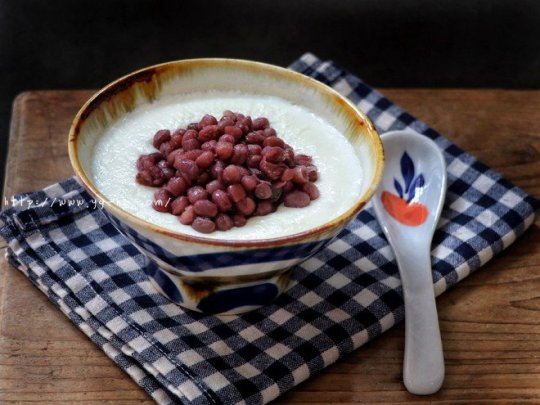
Image Source: [x]
Wang Zhuo Cheng
How did they introduce Jiang Cheng’s character to you?
Steel straight man [1].
TN:
[1] Chinese internet slang for heterosexual, uptight men who aren’t good at communicating their emotions, but who are still found to be cute and likeable by many.
Do you have anything interesting to share with us?
I remember there was once I was with Wei Wu Xian and Shijie, the three of us had a scene where we were eating fish. We had to make it look tasty but the fish then was practically raw, but the director still wanted us to act as if it smelled very fragrant and we had to look happy.
The smell of the fish was really strong, and we still had to act as if we were very happy. The scene had already ended but the director had yet to say “cut”. I was thinking then, “I should finish eating already.” Then Wei Wu Xian suddenly said, “Jiang Cheng, does it smell nice? Continue eating, eat more.” [2]
TN:
[2] Zhuo Cheng is referring to Episode 4 at around 27:25, the night before Lan Qi Ren’s lessons begin. Before this scene, Wei Wu Xian had earlier gone to play in a stream with Nie Huai Sang and had caught some fish. Unfortunately, Xiao Zhan’s ad libbed lines and Zhuo Cheng’s presumably annoyed expression did not make the cut ;_;

If you have a chance, will you take revenge?
I will find a chance.
616 notes
·
View notes
Photo


The Untamed Photobook Add-On Booklet Cast Interviews [5/9]
Liu Hai Kuan
One month before we started training, I had always been diligently exercising. My body weight was 145 jin [1], I even had a trainer, and I felt that my condition was quite good. After we started training, I was disgusted by how my body shape was too broad and I was not skinny enough, I thought, “Let’s lose another 5 jin [2].” But when I saw Lan Wang Ji, I realised that I was too big-sized. Yi Bo and Xiao Zhan have very small faces. Xiao Zhan’s face is already narrow, and with his two tufts of hair, it looks even narrower.
I then decided to lose another 5 jin, and after that I got a little addicted and lost another 5 jin. Now, I weighed 130 jin [3], and ever since we had started I had lost a total of 15 jin. A few days ago when I measured my chest, it was 93 cm [4] while before we started it was 110 cm [5], and I was especially miserable.
When we started training, I realised that all the actors are especially good-looking. During our breaks in between filming, I asked Xiao Zhan, “Ah Zhan, how heavy are you?” He said, “I’m 130 jin.” I said, “Okay, then I’ll try losing weight to 130 jin…” I hope the audience can see that I really respect this role and diligently want to portray their ideal Lan Xi Chen. [6]
TN:
[1] Approximately 87 kg or 191 lb
[2] Approximately 3 kg or 6.6 lb
[3] Approximately 78 kg or 172 lb
[4] Approximately 36.6”
[5] Approximately 43”
[6] I’ve always known that the actors were specifically told that they had to be slim in order to look good in the guzhuang costumes, but the extent to which Liu Hai Kuan took this and how much he worried about it really pains me. And I know that despite everything that’s going on with #bodypositivity, it’s a part of the show biz, but he is already such a beautiful person the way he is and how unhappy he was with the way he looked is just a little depressing.

Zhu Zan Jin
The one I interact most with in the show is Lan Xi Chen. Hai Kuan Laoshi is also very much like Lan Xi Chen, that is, very elegant and refined, and he doesn’t like to talk much. My personality is actually more extroverted, and we are like fire and ice: he is ice, I am fire. For example when we joked privately, I would always go “HAHAHAHA”, laughing uncontrollably, but he would quietly and calmly go “en”. But in the end we eventually switched, when he told me a joke, I would go “hehe”. We would tease and joke with on another very often.

391 notes
·
View notes
Note
Maybe I'm just being cranky but I get really annoyed when people confuse hanfu for kimono. It's an annoying trend that everything remotely Asian = Japan.
ngl I get annoyed sometimes too, “kimono” is used to describe any east-asian-looking robe thing even though it’s a pretty specific type of garment. Like I kinda hrmmm-ed at this scene in ATLA…

But people don’t usually mistake hanfu for kimono out of malice or racism, but just due to lack of exposure. So I’m gonna use your ask as an opportunity to give some quick n easy tips for how to tell kimono and hanfu apart. and hanbok while we’re at it (which is Korean for those who don’t know).
You can usually tell the difference from silhouette alone. To put it simply, kimono - rectangle, hanfu - triangle, hanbok - like a half oval-ish.

The obi, that wide, stiff sash, is also a distinct characteristic of kimono. I sometimes see people mistake hanfu for hanbok because some styles of hanfu also have high waistlines, so look at the skirt instead. Hanbok skirts can be triangular/A-lined too, but there’s still a sorta poofiness to it. There are different variations of these garments, but those are the basics.
2K notes
·
View notes
Note
Hi! So, one of my dreams is to design an outfit based on the four noble gentlemen as well as the four jewels of the scholar. I've made a design based on ink and plum blossoms and it includes sewing a daxiushan. There's a lot of embroidery involved (I'm learning suzhou style embroidery for it) and I was wondering if you knew if the embroidery was usually done before the garment was sewn together or after it's been finished? Any help would be appreciated!
Hello! Thanks for the question!
I’m not sure about which comes first historically, but my suggestion is to plan out your pattern pieces using chalk and embroider the fabric before sewing. Chinese embroidery is typically done on a slate frame or traditional lace up frame where the width of the entire fabric is stretched, unlike using a hoop, to maintain consistent tension.
I find the best way to embroider is to sit on the ground and place two chairs in front of me while balancing the frame across them like a bridge. That way both my hands are free to pass the needle without wasting time switching my right and left hands.
Once embroidered, you can relax the fabric accordingly so that it lies flat before sewing the garment.
And congrats on learning suzhou style embroidery! It takes a lot of precise needlework to produce those designs. I’m looking forward to seeing it! I’m also halfway done with making a tutorial for a daxiushan, so that will be published soon.
Some great resources are The Art of Chinese Embroidery by Margaret Lee. Her book is wonderful in detailing exact stitches as well as providing outlines for patterns. (x)

Another great resource is the youtube channel Chinese hand Embroidery苏绣-苏州刺绣 (Chinese hand Embroidery-Suzhou embroidery). I love watching them and it’s like ASMR for me. They were what really got me into Chinese embroidery in the first place.
youtube
youtube
youtube
I hope this helps!
-Jaz
307 notes
·
View notes
Video
tumblr
display of chinese hanfu by 瞳莞汉服
2K notes
·
View notes
Text
Not to be a fucking nerd or anything but writing academic papers is actually super fun when you have a genuine interest in the topic!
73K notes
·
View notes
Text
Jin Guangyao’s Violation of 忠孝仁义
So I had written about WWX and his strong sense of 忠孝仁义 last week. While I was writing it, I kept on thinking about JGY and how he managed to violate all of these virtues. I wanted to go into this characterization of him because I find it so interesting how opposite he is to WWX in the decisions he made. (Warning: i’m not nice to JGY here so if you don’t want him dragged, don’t read?)
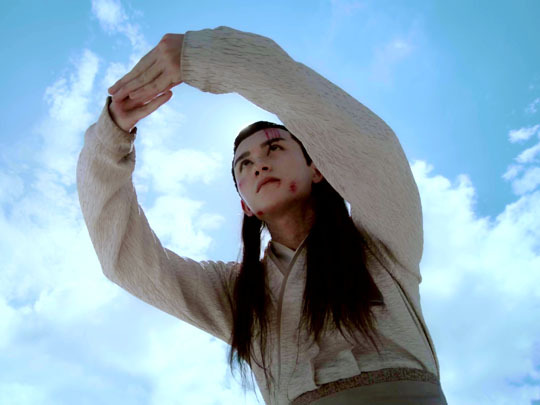
Keep reading
199 notes
·
View notes
Text
Wei Wuxian and Chinese Virtues of 忠孝仁义
There’s a lot of conversation about Wei Wuxian and how he struck out on his path without a concern for the Jiangs; about how he’s reckless and not giving a sh*t about his role within his society; about how he had a family and siblings and threw it all away for his sense of right and wrong. But the way I read his actions is within the context of the virtues of 忠孝仁义 (and how the virtues, especially 义, is ingrained in him via the Jiang sect motto). WWX’s major decisions can all be read as him acting in accordance with one or more of these virtues. Even when WWX is being his most irreverent self (and yes he’s rude and bring about a lot of second hand shame) he still remembers the we-self (to borrow from baoshan-sanren’s post) context as the head disciple of the Jiang Sect. Even when he seems to abandon everything, he didn’t abandon his understanding of these virtues.
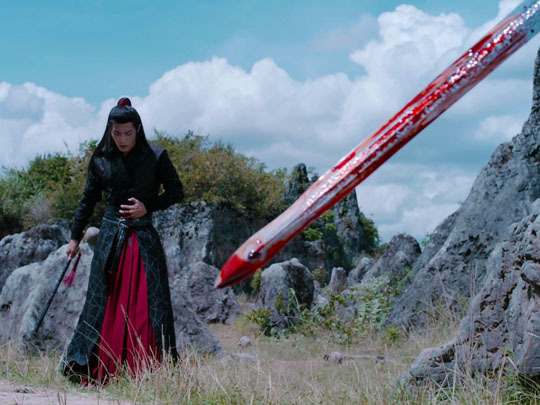
Keep reading
801 notes
·
View notes
Text
【魔道祖师手书】总角之宴【全员向】
一个又懒又皮的崽子 微博:@日夜咕咕day的阿京 lofter:@大京石匝
The rough translation of the name of this video, 总角之宴 - “The happiness of childhood” ( 总角 - hairstyle for children with two buns on both sides of the head; 宴 - here: a state of happiness, peaceful life)
https://www.bilibili.com/video/av32358492
Artwork: 大京石匝 (http://ajing073.lofter.com)


456 notes
·
View notes
Photo

Nie Mingjue & Jin Guangyao by 子隐-巨大菜型选手
279 notes
·
View notes